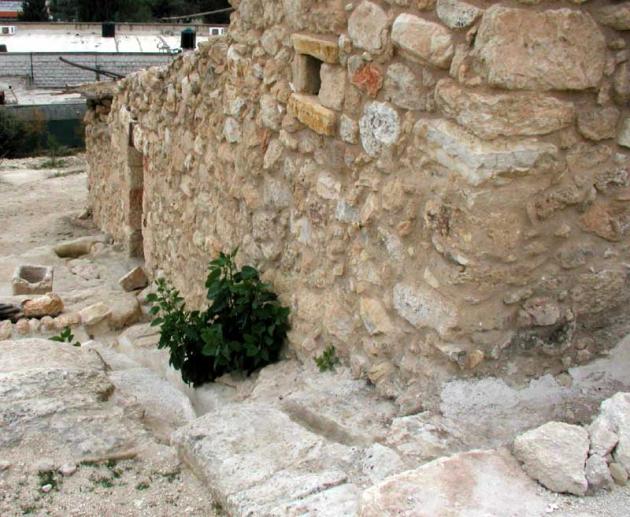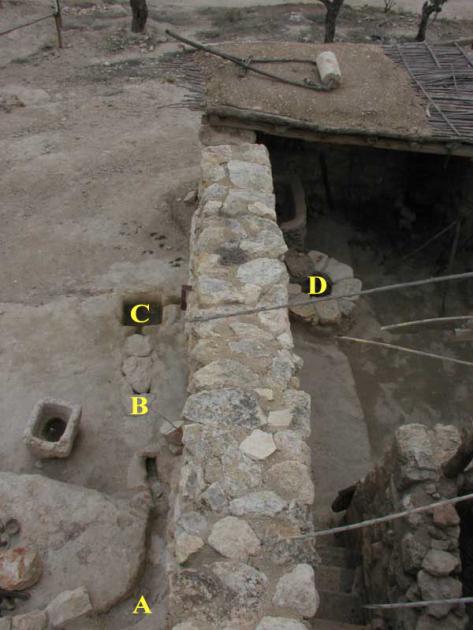Cisterns are wells hewn out of bedrock and are designed to collect water runoff from the winter rains for storage throughout the dry season. Typically located in the house courtyard, cisterns were bell-shaped and lined with plaster to minimise water loss through evaporation and seepage.
As a reliable supply of water was undoubtedly one of the most indispensable requirements for living, house planning invariably began by selecting a favoured location for a water cistern, usually a natural cavity or depression in the bedrock. This cavity would be hewn to a depth of at least 3 metres, taking advantage of the soft chalk which facilitates easy excavation.
To supply the cistern with water runoff from the roofs and surrounding bedrock, water channels are excavated around the perimeter of the house. The roofs themselves were equipped with either stone or ceramic gutters to direct water onto these channels leading to the cistern.
The water channels lead to a central collection or sedimentation basin where sediment from the fast flowing runoff would settle, allowing the upper level of the purest water to flow into the cistern. Sedimentation basins were emptied out periodically to ensure a clean water supply.
The cistern cavity and water channels are then lined with a special two-layer hydraulic plaster. The first plaster layer or base coat is formulated with slaked lime putty and sand mixed with a high percentage of wood ash. The ash increases the water retention of the base coat plaster, which is necessary for ensuring good adhesion to the porous bedrock substrate with minimal cracking.
Since this gray plaster base is highly porous, it forms a good substrate for the more impermeable finish layer, mixed with lime, fine sand and crushed pottery.
The relatively permeable ash plaster absorbs excess water resulting from burnishing and compacting the finish plaster, allowing for effective bonding of the two. Such composite plasters are a common feature of First Century hydraulic installations in Israel.

The plastered cistern is crowned with a durable capstone, with a small access to minimise evaporative loss and also reduce the likelihood of accidentally falling into the cistern.
The completed cistern operates as follows:
A. Water runoff from the roofs and surrounding bedrock is collected into drainage channels surrounding the house.
B. Flagstones are laid over portions of the channels to facilitate human traffic.
C. The water flows into a sedimentation basin which slows it, allowing silt to settle while allowing cleaner water to be channeled under the screen wall into the courtyard cistern.
D. The cistern capstone keeps the cistern covered to minimise evaporative loss and keep the water clean.
